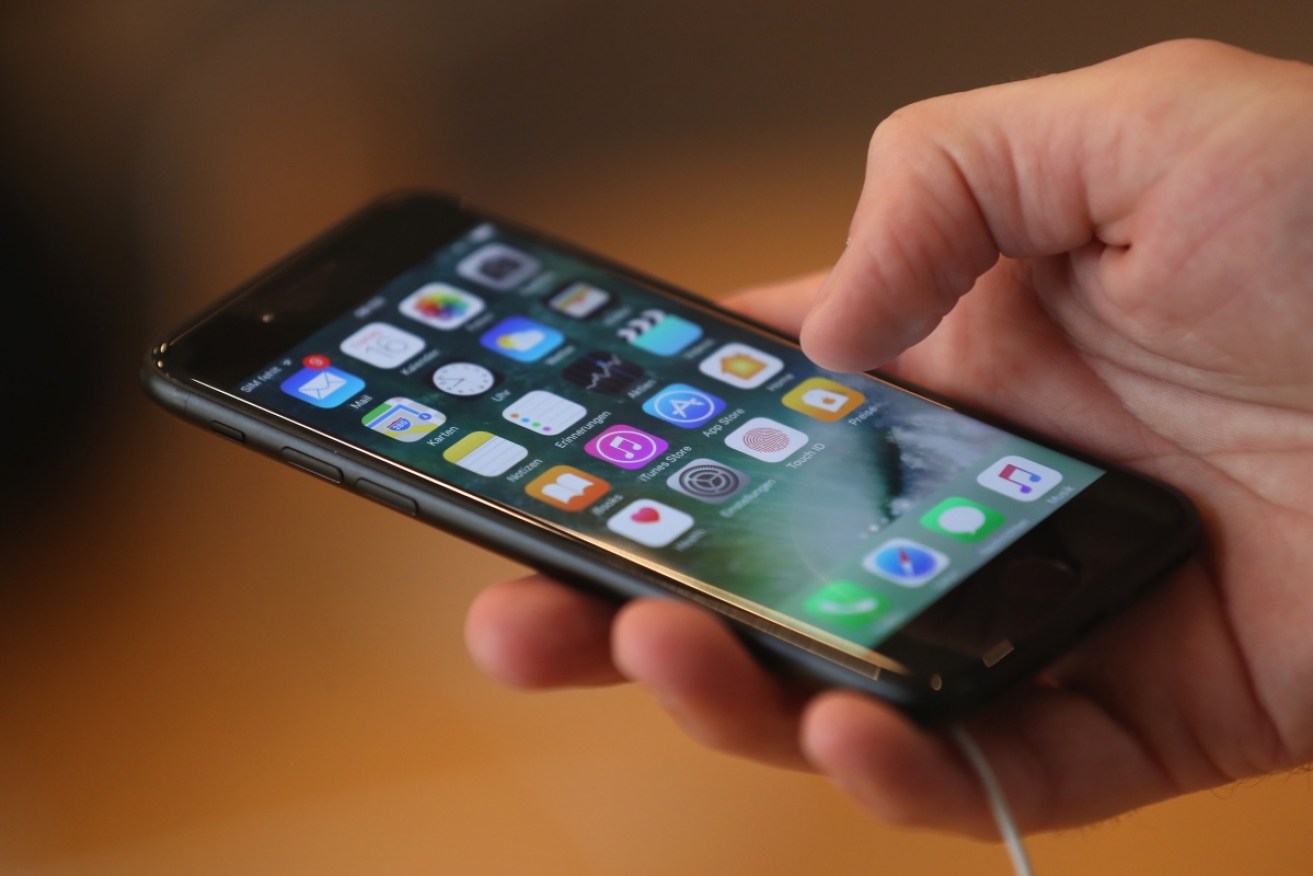The iPhone is flatlining. Here’s what must change


'Apple just isn't getting it right.' Photo: Getty
When it comes to technological evolution, no other smartphone has been on quite the roller coaster as iPhone.
When first released in 2007, Apple’s revolutionary smartphone offered users simplicity of function and ease of use not found in any other device. It was the first computer in your pocket.
The next few updates to iPhone introduced more innovative features, like higher-definition screens and improved security – not to mention a refinement of the smartphone’s superb design.

Steve Jobs mesmerised us when he launched the iPhone in 2007. Now we’re bored. Photo: Getty
With the dawn of this smart device, Steve Jobs, Apple CEO at the time, had the world’s undivided attention.
But since those heady days, Apple has been in a neck-and-neck race for dominance of the global smartphone market with its closest competitor, Samsung, with annual market share for each swinging as reliably as a pendulum.
Until now.
In October 2016, the unthinkable happened. Apple posted a decline in annual revenue – the first in 15 years – of $US46.9 billion, down 9 per cent on the previous year.
Considering Apple’s flagship product, iPhone, comprises 63 per cent of total revenue, losses were attributed to declining smartphone sales and changes in consumer buying habits the world over, which also largely influenced the company’s shrinking share of the Chinese market – Apple’s second largest, next to the United States.
Sure, the company experienced a bump in sales after iPhone 7 was released on September 16. It usually does with each new iPhone. But its removal of the headphone jack, which angered many consumers, did not help claw back ground lost to its closest competitors, Samsung and Huawei.
What was once a crack in industry and consumer confidence is widening into a chasm.
Once known for manufacturing hardware as powerful and aesthetically pleasing as its software was stable, the company’s designs have become stale. Many product lines now appear in a constant state of catch-up, and its software compromised by a lack of features and/or sandboxing.
What we want, now!
For all the doom and gloom, iPhone is not dead yet. This smartphone, one that many other manufacturers went on to emulate, became the gold standard for a reason.
But Apple will need to introduce some major innovations if it hopes to regain the ground lost over the past 12 months: firstly, by incorporating features on par with other leading smartphones; and secondly, with tech that goes beyond simple gimmicks and into true innovation.
Rumours about the next update to iPhone are already starting to surface, with some intriguing ideas among the greater stretches of the imagination.
Here are some new features we’d like to see, along with some futuristic tech that isn’t far off.
Cut the cord

Wireless charging is the way of the future. Photo: Getty
Despite Apple developing wireless charging for Apple Watch, launched in 2015, the feature is yet to appear in the company’s smartphone.
Yes, there are a few negatives, like reduced portability, but overall, wireless charging offers a number of benefits, especially for those tied to a desk of car driver’s seat all day.
While smartphone wireless charging is currently dominated by the Qi system, odds are we’ll see iPhone adopt a proprietary system that will only work with Apple peripherals.
Screen real estate
Gone are the days of the bezel. Many new smartphones feature an entirely borderless or wrap-around screen, offering users as much screen space as possible.
The design of iPhone, on the other hand, has always featured a metal bezel around the glass display. C’mon, Apple, let’s eliminate that unwanted bezel in favour of a slimmer design.
Holographic displays

We don’t need goggles to get a better screen experience. Photo: TechnoCrazed
Why settle for a 3D screen and glasses when you can have a holographic display?
That’s right, a number of companies, including Samsung, are already working on holographic smartphone displays, which take us way beyond simple parallax effects.
Hardware is also being developed to offer 3D display without the use projection or glasses, such as this new display, dubbed HoloFlex.
True AI
Digital personal assistants – like Siri (Apple), Google Now (Google) and Cortana (Microsoft) – have been around for a number of years, but have so far failed to become truly useful.
Taking Apple’s Siri to the ‘next level’ will involve not only improving conversational ability, but also allowing deeper connections to every Apple device a user owns along with third-party app, all from one device.
Light years ahead

Light travels much faster than Wi-Fi. Photo: Getty
Whereas Wi-Fi uses RF (Radio Frequency) to communicate data, Li-Fi involves the use of light to transfer data, but is up to 100 times faster.
Imagine: anywhere in your home that is lit is a potential super-speed data transfer zone. Entire 4K movies could be downloaded to your iPhone in mere seconds; you could even enjoy live VR or AR without any lag.
This technology could even be implemented throughout a city, offering super-fast internet to smartphone users wherever the light falls on the street.
While some of these ideas are many years off, considering Apple’s need to dominate we may see these innovations sooner than we think.
What new technology would you like to see in the next iPhone?








